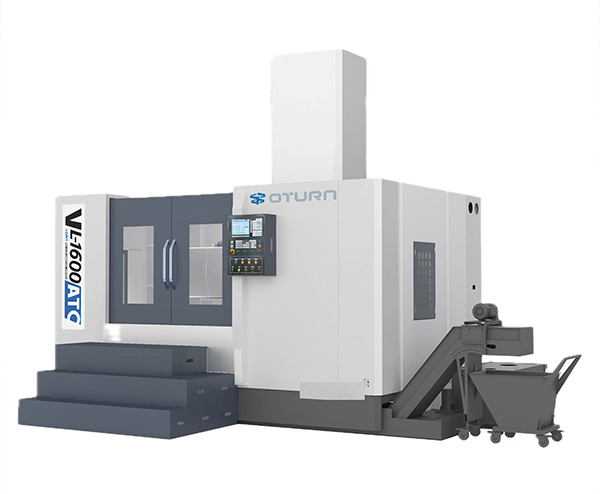Center Height Accuracy: The Key to Machining Quality
In CNC vertical lathe machining, the accuracy of the center height directly affects the final quality of the workpiece. Even minor deviations can cause dimensional errors and geometric tolerance issues, which may seriously impact the assembly and service life of parts. Therefore, mastering scientific and effective center height adjustment methods is essential to ensure machining stability and high precision.
Definition of Center Height and Its Impact on Errors
The center height of a CNC vertical lathe refers to the perpendicular distance between the spindle rotation center and the worktable surface. If there is an error in this height, the tool’s actual cutting position will deviate from the ideal path, causing tapering or uneven surfaces on disk-type or sleeve-type workpieces. For example, in the machining of high-precision bearing sleeves, center height errors can lead to uneven wall thickness, directly affecting bearing performance and lifespan.
Precise Measurement: The First Step in Adjustment
Accurate measurement is the foundation of adjustment. Common tools include height gauges, dial indicators, and laser interferometers. The height gauge measures the vertical distance between the worktable and spindle end face; the dial indicator, fixed on the machine guide rail, contacts the spindle outer circle and detects height variation as the spindle rotates; the laser interferometer provides fast and highly accurate error detection. Multiple measurements are taken and averaged to ensure reliability.
Calibration and Adjustment: Flexible Response to Errors
Adjustment methods should be flexibly applied based on different error conditions. If the center height is too low, shims of appropriate thickness can be added between the spindle seat and machine base; if too high, the spindle seat mounting surface needs grinding. The process follows a gradual fine-tuning principle, with repeated measurements and calibrations until the center height meets design requirements. Some advanced vertical CNC lathes are equipped with automatic adjustment systems driven by servo motors and screw-nut mechanisms for spindle height compensation, but regular manual calibration is still necessary.
Maintenance and Inspection: Ensuring Stability
Routine maintenance is crucial for maintaining center height stability. Regularly clean the worktable and spindle mounting area to prevent chips, oil, and debris from affecting measurement accuracy. Check whether the spindle seat fixing bolts are loose and tighten them promptly if needed, followed by re-measuring the center height. Establish maintenance records to track measurement and adjustment data, helping analyze error trends and detect potential issues early.
Mastering the core methods of center height measurement, calibration, and maintenance for CNC vertical turning lathe effectively prevents machining problems caused by center height errors, providing a solid guarantee for producing high-precision workpieces. OTURN is committed to offering customers high-precision, highly stable machining equipment and technical support, helping enterprises avoid machining risks due to center height deviations, improving production efficiency and product quality, and advancing intelligent manufacturing to new heights.
FAQ
1. What is the center height of a CNC vertical lathe?
The center height refers to the vertical distance between the spindle rotation center and the worktable surface, which is a crucial parameter to ensure machining accuracy.
2. What machining problems can center height errors cause?
Center height errors may lead to tapering, uneven surfaces, and dimensional deviations in workpieces, seriously affecting part assembly and service life.
3. How to accurately measure the center height?
Common measuring tools include height gauges, dial indicators, and laser interferometers. Multiple measurements are taken and averaged to ensure data accuracy.
4. How to adjust when there is a center height deviation?
If the center height is too low, shims can be added for adjustment; if too high, the spindle seat mounting surface needs grinding. Adjustments should be made gradually with repeated measurements and calibrations.
5. Does a CNC vertical lathe have an automatic center height adjustment function?
Some advanced CNC machines are equipped with automatic adjustment systems driven by servo motors to achieve automatic compensation, but regular manual calibration is still required.
6. How to ensure the long-term stability of the center height?
Regularly clean the machine worktable and spindle mounting area, check and tighten spindle seat bolts, and establish maintenance records to detect and address abnormalities promptly.
Post time: May-27-2025








